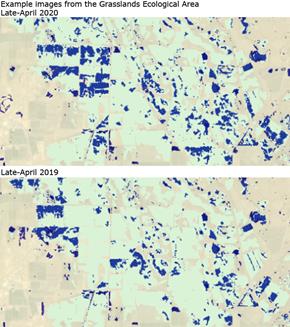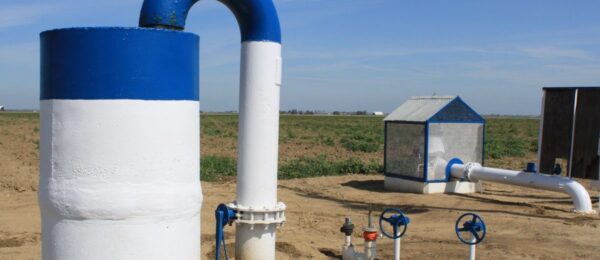From Point Blue Conservation Service:
With summer in full swing, it may be time to begin evaluating plans for the coming fall and winter seasons. If you are interested in learning more about the distribution of surface water across the Central Valley both in the past and in near real-time, we invite you to explore some exciting new features at Water Tracker – www.pointblue.org/watertracker
 Explore wetland vegetation. Recent work by USGS provides annual maps of wetland vegetation across the Central Valley.
Explore wetland vegetation. Recent work by USGS provides annual maps of wetland vegetation across the Central Valley.
Two layers are available:
Wetland vegetation type, aka moist soil seed plants (swamp timothy, watergrass, cocklebur, etc.)
Habitat structure (tall emergent, open water, bare ground, etc.)
These data (2007-2017) are now available for viewing and downloading from the Map Viewer in Water Tracker. Learn more about from a recent publication led by Kristin Byrd at USGS.
Summaries of water from custom areas. You can now upload a shapefile or draw a custom spatial area and then, both download the data, AND get a summary of water in that area over time with interactive time-series plots. See an example here.
Coming soon. In the next several months we plan to make more data layers available including fallow fields (2000-2017), bird distribution/suitability (4 shorebirds, 4 waterfowl), giant garter snake distribution/suitability, groundwater recharge (based on Basin Characterization Model) and more!
What do managers need?
At the Central Valley Wetland Managers meeting in March, we shared spatial data we are currently developing, including fallow fields, wetland vegetation and types, groundwater recharge potential, bird and snake distribution/suitability maps, as well as some of the forecasting tools (within-year and long-term) in development.
A survey of participants in the meeting resulted in helpful feedback:
(1) most wetland managers’ first priority is their wetland complex
(2) for data to be most helpful for decision-making it should be made available in February/March and July/August, and
(3) visualizations and semi-custom summaries and/or reports appear to be the most appealing at this point.
We want these data and technologies to be useful and help wetland managers do their jobs, so we will be working to make sure that Water Tracker can deliver on these needs for wetland managers. Any feedback from the community is welcome. Email us at watertracker@pointblue.org to let us know what you need.
 How is 2020 looking so far?
How is 2020 looking so far?
Overall, based on data from Water Tracker, the first 5 months of 2020 had, on average, 10% lower open water than the 2013-2019 average for these months. Only April had more open on the landscape water than the previous 7-year average and February had the lowest with a 17% reduction from average conditions. This is not surprising given the dry spell this winter. The estimated extent of open water in seasonal wetlands was also lower (-5%) across the first 5 months of 2020 compared to the recent 7-year average.
What is Water Tracker?
As a reminder, Water Tracker uses Landsat satellite imagery to update the distribution of open surface water in the Central Valley. It’s refreshed every 16 days. Water Tracker displays where open surface water is in the Central Valley in map form and also provides data summaries.
Anyone can quickly and easily get a picture of where the water is and isn’t, now and in the recent past. Data are available starting in 2013 (as far back as 2000 can be requested). Data can also be downloaded directly from Water Tracker.
There are a multitude of ways these data can inform decisions. Recent examples include 1) using the tool to decide on the best places to add water for the millions of waterbirds that rely on the Central Valley, and 2) to better understand the impacts of extreme drought on waterbird habitat availability.
Tell us how you are using Water Tracker
Please share your stories with us about how you are using Water Tracker at watertracker@pointblue.org. The best way for us to support this free, open-source resource is through understanding and highlighting how it is most useful.
Thank you for using and sharing Water Tracker in an effort to work towards meeting the water needs of both wildlife and people.
 The details of how a groundwater sustainability plan will be implemented are defined by the setting of sustainable management criteria (or SMC). With several undesirable results to consider, a range of technical analyses to perform, data gaps yet to be filled, and potentially conflicting stakeholder interests, the process to establish sustainable management criteria is often involved and challenging.
The details of how a groundwater sustainability plan will be implemented are defined by the setting of sustainable management criteria (or SMC). With several undesirable results to consider, a range of technical analyses to perform, data gaps yet to be filled, and potentially conflicting stakeholder interests, the process to establish sustainable management criteria is often involved and challenging.






